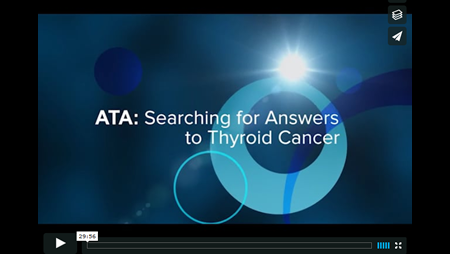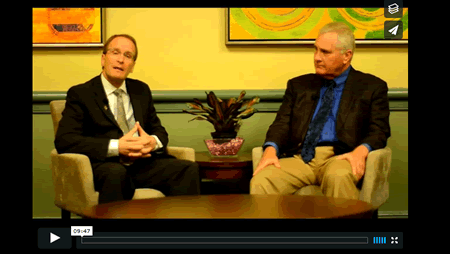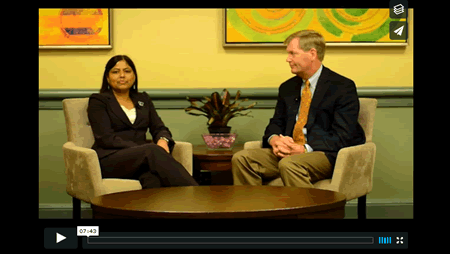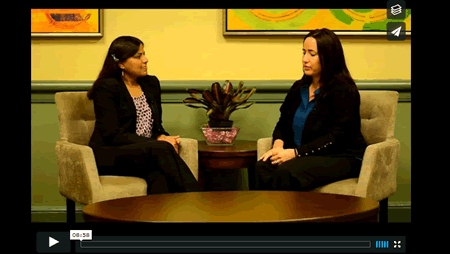Clinical Thyroidology for the Public summarizes selected research studies discussed in the previous month’s issue of Clinical Thyroidology, an official publication of the American Thyroid Association. Editor-in-chief, Alan Farwell, MD, FACE
Available in pdf format for saving and printing and Web page format for viewing online
PDF Format for Saving and Printing
Clinical Thyroidology for the Public Volume 14 Issue 1 (PDF file, 6.92 MB)
TABLE OF CONTENTS – Web Format
HYPOTHYROIDISM
Physician perception and patient input are important influences in the treatment of hypothyroidism
Over the years, providing medical decisions and recommendations in clinical practice has evolved into a more patient-centered approach. In the current model of shared decision making, information and opinions are exchanged between patients and providers to develop a treatment plan that works best for each individual patient. These studies: 1) describe a survey tool to improve communication from patients to their physicians and 2) examine physician–patient interactions as perceived by physicians.
Bellastella G et al 2019 EMPATHY: a new tool for identifying the most suitable thyroxine formulation in hypothyroid patients. Thyroid 29:928–933. PMID: 30963820.
Esfandiari NH et al 2019 Patient requests for tests and treatments impact physician management of hypothyroidism. Thyroid. Epub 2019 Oct 10. PMID: 31436135.
(PDF File for saving and printing, 846 KB)
THYROID AND PREGNANCY
Postpartum thyroiditis in women with euthyroid and hypothyroid Hashimoto’s thyroiditis prior to pregnancy
Postpartum thyroiditis is estimated to happen after 8% of pregnancies. While it usually occurs in women with previously normal thyroid function during pregnancy, it may also occur in mothers who suffer from hypothyroidism before pregnancy. The goal of this study was to evaluate the frequency of postpartum thyroiditis in women with Hashimoto’s thyroiditis with and without hypothyroidism before pregnancy.
Moleti M et al 2020; Postpartum thyroiditis in women with euthyroid and hypothyroid Hashimoto’s thyroiditis antedating pregnancy. J Clin Endocrinol Metab. Epub 2020 Apr 17. PMID: 32301483.
(PDF File for saving and printing, 811 KB)
HYPERTHYROIDISM .
Treatment of subclinical hyperthyroidism in the elderly
The need to treat subclinical hyperthyroidism is not clear, partly due to the risks of the treatment options. Some studies suggest that subclinical hyperthyroidism increases the risk of osteoporosis, irregular heart beat (atrial fibrillation) and heart failure. The goal of this study was to determine the effectiveness of treating subclinical hyperthyroidism with either radioactive iodine therapy or the antithyroid medication methimazole.
Azizi F et al. 2020 Treatment of subclinical hyperthyroidism in the elderly: Comparison of radioiodine and long-term methimazole treatment. Thyroid. Epub 2020 Aug 18. PMID: 32811342.
(PDF File for saving and printing, 925 KB)
THYROID CANCER
Primary care provider involvement in caring for thyroid cancer survivors
Specialists, such as endocrinologists, often treat thyroid cancer patients initially. Long-term care may be then be transitioned to the primary care provider (PCP). Little is known how confident PCPs are in caring for and managing people who have survived thyroid cancer. The purpose of this study is to understand PCP involvement and confidence in caring for thyroid cancer survivors.
Radhakrishnan A et al 2020 Primary care provider involvement in thyroid cancer survivorship care. J Clin Endocrinol Metab 105(9):dgaa437. PMID: 32639557.
(PDF File for saving and printing, 738 KB)
THYROID CANCER
Can central neck dissection for papillary thyroid microcarcinoma be avoided to decrease thyroid cancer overtreatment?
Papillary thyroid microcarcinoma is generally managed with less extensive surgery, often only a thyroid lobectomy. However, despite the excellent prognosis, some patients still have a prophylactic central neck dissection. This study investigated the benefit of prophylactic central neck dissection to decrease recurrence of thyroid cancer in the neck in patients with papillary thyroid microcarcinoma who underwent thyroid lobectomy.
Ryu YJ and Yoon JH 2020 Impact of prophylactic unilateral central neck dissection needed for patients with papillary thyroid microcarcinoma. Gland Surg 9:352–361. PMID: 32420259.
(PDF File for saving and printing, 745 KB)
THYROID CANCER
Controversies, consensus, and collaboration in the use of radioactive iodine therapy in thyroid cancer
The management of thyroid cancer has undergone a lot of changes over the last 10+ years. In particular, there has been a marked decrease in the use of radioactive iodine therapy after surgery for thyroid cancer. This paper summarizes an agreement between the major medical societies to reach more collaborative and consistent, evidence-based guiding principles for the best management of thyroid cancer.
Tuttle RM, et al 2019 Controversies, consensus, and collaboration in the use of 131I therapy in differentiated thyroid cancer: a joint statement from the American Thyroid Association, the European Association of Nuclear Medicine, the Society of Nuclear Medicine and Molecular Imaging, and the European Thyroid Association. Thyroid 29:461–470. PMID: 30900516.
(PDF File for saving and printing, 754 KB)









